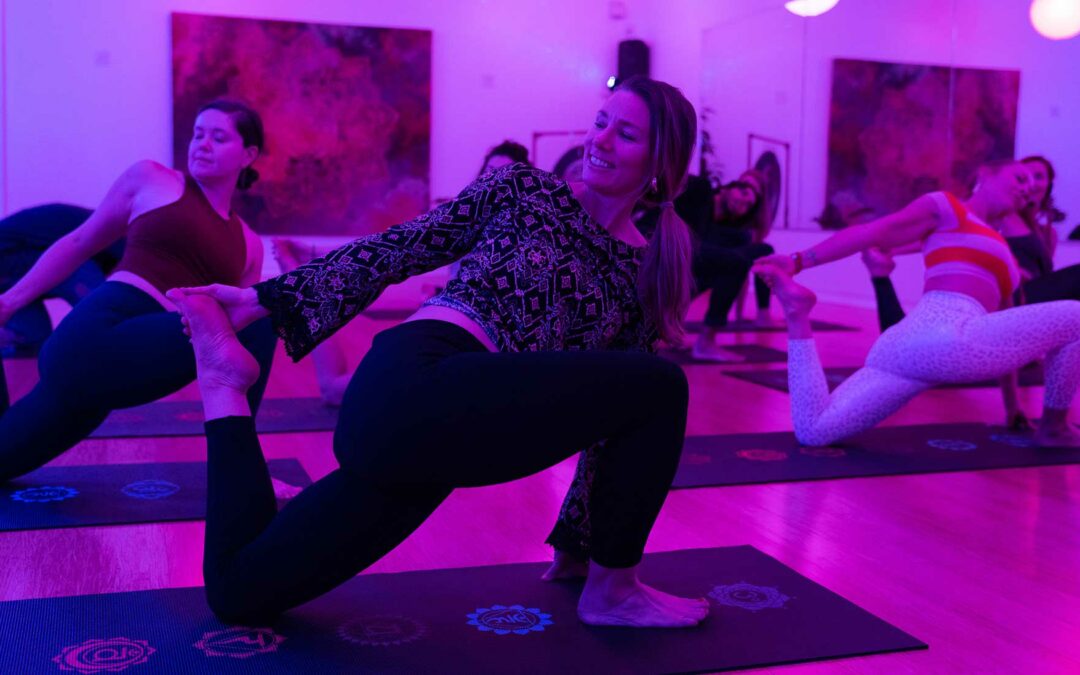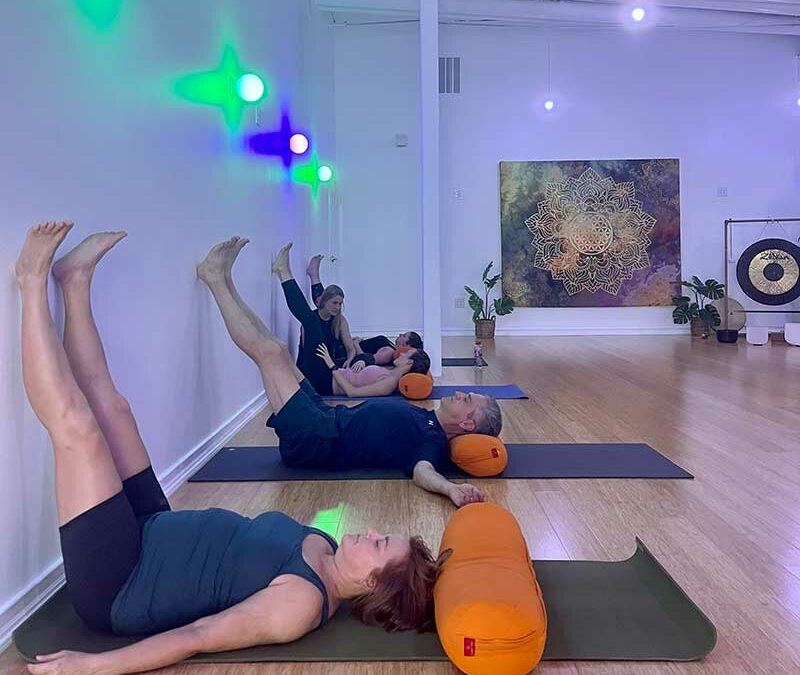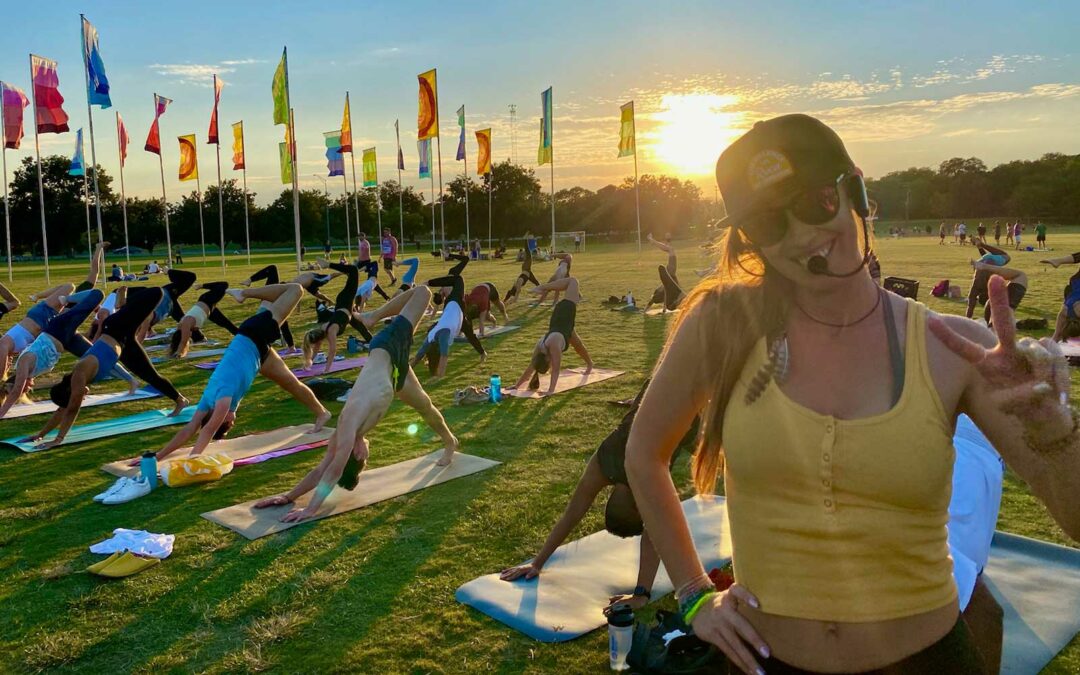
Feb 4, 2024
Unearthing the Ancient Origins of Yoga: The Oldest Known Form of Yoga
Yoga, with its deep philosophical roots and myriad physical and mental benefits, has captivated millions of people worldwide. While modern yoga takes various forms and styles, each with its unique approach, philosophy, and goals, its origins can be traced back to ancient India. Among the diverse types of yoga that have evolved over millennia, one stands out as the oldest known form of yoga: Hatha Yoga.
Hatha Yoga: The Foundation of All Yoga
Hatha Yoga, pronounced “HAH-tuh yoga,” is often referred to as the foundational practice from which all other forms of yoga have emerged. The word “hatha” itself is a combination of two Sanskrit words: “ha” meaning “sun” and “tha” meaning “moon.” This reflects the fundamental principle of balance and union at the heart of Hatha Yoga – the harmonization of opposing forces.
The Origins of Hatha Yoga
The origins of Hatha Yoga can be traced back to ancient Indian texts known as the Hatha Yoga Pradipika and the Shiva Samhita. These texts, written between the 12th and 17th centuries CE, provide valuable insights into the practice and philosophy of Hatha Yoga. However, Hatha Yoga’s roots extend even further into antiquity, reaching back to the early centuries of the Common Era.
Early mentions of Hatha Yoga can be found in ancient texts like the Bhagavad Gita and the Yoga Sutras of Patanjali, which were written around 500 BCE. These references, while not comprehensive, allude to physical and meditative practices that bear similarities to the principles of Hatha Yoga. The Bhagavad Gita, for example, mentions controlling the breath as a means of calming the mind, which is a key component of Hatha Yoga.
Hatha Yoga: A Union of Body and Mind
At its core, Hatha Yoga seeks to unite the physical body (represented by the sun, or “ha”) with the mental and spiritual aspects (represented by the moon, or “tha”). This union is achieved through a combination of physical postures (asanas), controlled breathing techniques (pranayama), meditation, and cleansing practices (shatkarma). The goal is to balance and purify the body and mind, preparing them for higher states of consciousness and spiritual awakening.
Key Components of Hatha Yoga
Asanas: Hatha Yoga places a strong emphasis on physical postures to improve flexibility, strength, and balance. These asanas are designed to activate and balance the body’s energy centers, or chakras, promoting physical and mental well-being.
Pranayama: The practice of controlled breathing is integral to Hatha Yoga. Various breathing techniques are employed to enhance the flow of prana (life force) within the body, resulting in increased vitality and mental clarity.
Meditation: Hatha Yoga includes meditation to calm the mind, improve concentration, and connect with the inner self. This aspect of the practice helps individuals gain greater self-awareness and self-realization.
Shatkarma: Cleansing practices are essential in Hatha Yoga to purify the body and prepare it for deeper spiritual experiences. These practices include cleansing the digestive system, nasal passages, and the mind itself.
The Enduring Legacy of Hatha Yoga
Hatha Yoga’s rich history and its continued relevance in the modern world attest to its enduring legacy. As the oldest known form of yoga, it has served as the foundation upon which numerous other yoga styles and practices have been built. Whether one’s goal is physical fitness, mental clarity, or spiritual awakening, Hatha Yoga provides a comprehensive framework for achieving holistic well-being.
Hatha Yoga stands as a testament to the timeless wisdom of ancient Indian sages who sought to unlock the full potential of the human experience. Its balanced approach to physical and mental health has resonated with countless practitioners throughout history and continues to do so today. By honoring the ancient roots of Hatha Yoga, we can deepen our understanding of this ancient practice and harness its transformative power in our modern lives.

Jan 10, 2024
Yin Yoga is a style of yoga that focuses on long-held, passive poses that target the deep connective tissues in the body, such as ligaments, tendons, and fascia. Unlike more dynamic and active styles of yoga, like Vinyasa or Hatha, Yin Yoga involves holding poses for extended periods, typically ranging from 1 to 5 minutes or even longer. This extended duration allows the muscles to relax and places stress on the connective tissues, which can lead to increased flexibility and joint mobility.
Here are some key characteristics and principles of Yin Yoga:
- Long-held poses: Poses are typically held for several minutes, often with the support of props like blocks, bolsters, or blankets to make the poses more comfortable.
- Gentle and passive: Yin Yoga is not about pushing yourself to your physical limits or engaging in strenuous activity. It encourages a more passive and meditative approach to asana practice.
- Targeting connective tissues: The extended holds in Yin Yoga target the dense, less elastic tissues in the body. This can help improve flexibility, joint health, and the flow of energy (chi or prana) through the body’s meridian channels.
- Stillness and mindfulness: Practitioners are encouraged to cultivate mindfulness and awareness during the practice, often incorporating elements of meditation and breathwork to enhance the experience.
- Individualized practice: Yin Yoga can be adapted to suit the individual’s needs and abilities, making it accessible to people of various fitness levels and body types.
- Balance to active practices: Many people use Yin Yoga as a complement to more active and dynamic forms of yoga or exercise. It can help balance out the yang (active) aspects of their practice and promote relaxation and recovery.
- Benefits: Some potential benefits of Yin Yoga include increased flexibility, improved joint mobility, reduced stress, relaxation, and a sense of inner calm. It may also be helpful for people with certain chronic conditions or injuries, though it’s essential to consult with a qualified yoga instructor or healthcare professional for guidance.
It’s worth noting that Yin Yoga is not a high-intensity workout and may not be suitable for everyone. If you’re interested in trying Yin Yoga, consider taking classes at Lizard Yoga. We can provide proper guidance and ensure you practice safely. As with any form of exercise, it’s a good idea to consult with your healthcare provider before starting a new yoga practice, especially if you have any underlying medical conditions or concerns.

Jan 10, 2024
Vinyasa yoga, also known as flow yoga, offers several benefits that make it a popular and highly regarded form of exercise and mindfulness practice. Here are some reasons why Vinyasa yoga is considered good for you:
Physical Fitness: Vinyasa yoga is a physically demanding practice that helps improve flexibility, strength, and endurance. The continuous flow of poses challenges various muscle groups and enhances overall physical fitness.
Cardiovascular Health: The dynamic nature of Vinyasa yoga can elevate your heart rate, leading to cardiovascular benefits. It can help improve circulation, lower blood pressure, and promote a healthier heart.
Stress Reduction: The synchronization of breath with movement in Vinyasa yoga encourages mindfulness and helps reduce stress and anxiety. Focusing on the present moment can promote relaxation and mental well-being.
Improved Flexibility: Vinyasa yoga includes a wide range of poses that target different parts of the body. Regular practice can lead to increased flexibility, making daily movements easier and reducing the risk of injury.
Strength Building: Many Vinyasa poses require core strength and stability. Consistent practice can lead to a stronger core, improved posture, and better overall muscular tone.
Balance and Coordination: Vinyasa sequences often incorporate balancing poses that challenge your coordination and proprioception (awareness of your body in space). This can enhance your overall balance and coordination.
Weight Management: Engaging in regular Vinyasa yoga sessions can help with weight management by burning calories, increasing metabolism, and promoting a healthier lifestyle.
Mind-Body Connection: Vinyasa yoga encourages a strong connection between the mind and body. By focusing on your breath and the sensations in your body, you can develop greater self-awareness and mental clarity.
Adaptability: Vinyasa yoga can be adapted to suit various fitness levels and individual needs. Whether you’re a beginner or an experienced yogi, you can modify the practice to meet your goals and limitations.
Variety and Creativity: Vinyasa classes often offer a wide variety of sequences, so you can experience different combinations of poses and movements. This variety keeps the practice interesting and engaging.
Spiritual Growth: While not religious in nature, Vinyasa yoga can be a spiritual practice for some, as it encourages self-reflection and a deeper understanding of oneself.
Community and Support: Practicing Vinyasa yoga in a group class can provide a sense of community and support. It allows you to connect with like-minded individuals and share the benefits of yoga together.
In Vinyasa yoga, there isn’t a single specific “Vinyasa yoga move.” Instead, Vinyasa yoga is characterized by a continuous flow of movements and poses linked together in a sequence, with a strong emphasis on the coordination of breath and movement. The term “Vinyasa” itself refers to the transition between two yoga poses that is synchronized with a specific breath pattern, often involving a combination of plank, chaturanga, upward-facing dog or cobra, and downward-facing dog.
Here’s a description of what a typical Vinyasa flow sequence might look like:
Start in a standing position at the front of your yoga mat, often in Mountain Pose (Tadasana).
Inhale as you raise your arms overhead into Upward Salute (Urdhva Hastasana).
Exhale as you fold forward into Forward Fold (Uttanasana).
Inhale, lift your chest slightly, and look forward in Half Forward Bend (Ardha Uttanasana).
Exhale as you step back into Plank Pose.
Lower down slowly with an exhale into Chaturanga Dandasana (a low push-up position).
Inhale, as you transition into Upward-Facing Dog (Urdhva Mukha Svanasana) with your chest lifted and legs off the mat, or Cobra Pose (Bhujangasana) with your thighs and pelvis on the mat.
Exhale as you push back into Downward-Facing Dog (Adho Mukha Svanasana).
From Downward Dog, you can either hold the pose or flow through the sequence again by stepping or jumping forward to Forward Fold and then inhaling back up to Upward Salute.
This is just one example of a Vinyasa flow sequence. In reality, Vinyasa yoga offers a wide variety of sequences and poses, and the specific movements can vary from one class to another. The key is the continuous and smooth flow of movements coordinated with your breath, which creates a dynamic and meditative practice that helps build strength, flexibility, and mindfulness. Vinyasa classes may also incorporate a variety of other poses and movements beyond this basic flow to keep the practice interesting and challenging.
It’s important to note that the benefits of Vinyasa yoga may vary from person to person, and consistency in practice is key to experiencing these advantages. Additionally, it’s always a good idea to consult with a healthcare professional before starting any new exercise routine, especially if you have underlying medical conditions or injuries.
Sign up for our next Vinyasa (Flow) Yoga Class.



